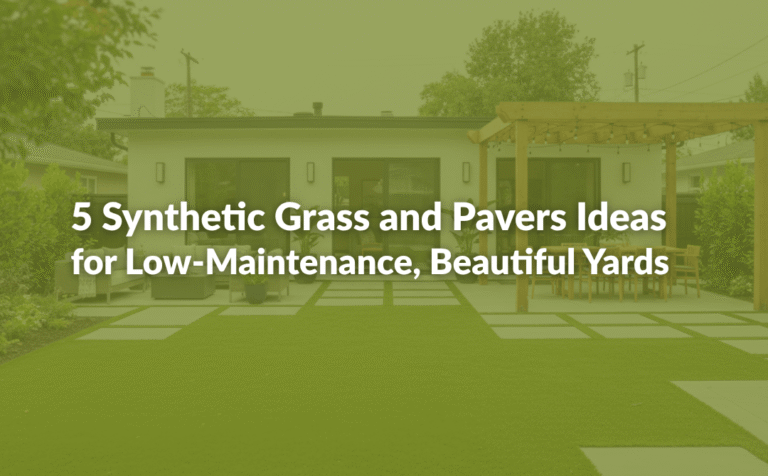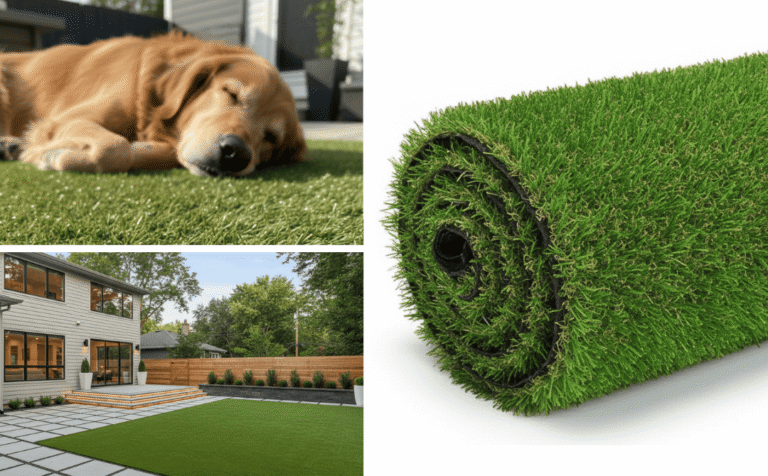Why Artificial Lawn Grass Turf Is the Smart Choice for Eco-Friendly Landscaping

Introduction
As a result of growing concerns surrounding the environment, homeowners and businesses are looking for landscaping alternatives that satisfy infilling and visual appeal while being environmentally friendly. Artificial lawn grass turf is a top option for landscaping alternatives, providing a green, lush appearance without the negative environmental impact of natural grass and conventional landscaping materials. In this article, we explore the advantages of choosing artificial lawn grass turf and the environmental benefits in relation to conventional landscaping.
Understanding Artificial Lawn Grass Turf
Artificial lawn grass turf is a surface that imitates natural grass in appearance and feel with little to no maintenance. Synthetic Putting Greensis made from durable long-lasting materials such as polyethylene, polypropylene, or nylon. Synthetic lawn grass is used in residential and commercial landscapes because they enhance the cleanliness and appearance of the landscape consistently throughout the year. Recent technology has allowed synthetic Putting Greens to become increasingly realistic, more sustainable, and more pet-friendly than ever before.
Environmental Benefits of Artificial Lawn Grass Turf
1. Major Water Savings
Traditional lawns are thirsty. It takes a lot of water to keep natural grass healthy and green, especially in arid areas. However, watering is eliminated when using Synthetic lawn grass turf. Turf can actually save up to 35,000 gallons of water annually per household, according to reports like one from the Santa Clara Valley Water District. That has a significant effect, particularly in regions that are prone to drought.
2. No More Lawn Chemicals
With natural grass, you will always be reaching for fertilizers, pesticides, and herbicides most of which are absorbed by your soil and water supply. With artificial turf, there is none of that. No harsh chemicals means it is better for the environment and safer for kids and pets.
3. Smaller Carbon Footprint
Think about all the gas-powered tools mowers, edgers, trimmers that go into keeping a regular lawn neat. Those tools produce carbon emissions. Artificial turf eliminates that need entirely. A study by the Stockholm Environment Institute found that going synthetic could cut lawn-related carbon emissions by up to 87% over 10 years. That’s some serious eco-impact.
4. Long-Term Use and Waste Reduction
With minimal maintenance, high-quality Synthetic turf can last anywhere from 15 to 25 years. Less waste and money are spent on replacements, reseeding, and ongoing lawn maintenance when there is that level of durability.
Extra Benefits Worth Mentioning
Pet-Friendly and Super Simple to Maintain
Modern artificial lawn grass turf is a game-changer for pet owners. Designed with durability and cleanliness in mind, today’s turf is built to withstand even the most energetic pups. It’s non-toxic, resists wear and tear from digging, and some types are even engineered with antimicrobial protection to help minimize odors and bacteria buildup. Cleaning up after your dog is easy just rinse with water, and you’re good to go. No muddy paws, no dead patchesjust a clean, green play space your furry friend will love.
Year-Round Curb Appeal No Matter the Weather
Natural grass fades, browns, and struggles through droughts, heatwaves, and cold snaps. With artificial lawn grass turf, your lawn stays consistently green and manicured every day of the year. Rain, shine, or snow, you get a vibrant and uniform look that boosts curb appeal without the need for constant lawn care. It’s like having a professional landscaper on duty 24/7—without the recurring cost.
Addressing Common Concerns (And Smart Fixes)
“Does Artificial Turf Get Too Hot?”
Yes, it’s true older types of artificial turf could heat up in direct sun. But the latest versions of artificial lawn grass turf are equipped with heat-reflective and cooling technologies. Many now come with special infill materials like silica sand that help lower the surface temperature. Plus, a quick spray with a garden hose is a fast way to cool things down during peak summer heat. Problem solved.
“Isn’t It Bad for the Environment to Manufacture?”
Good question. Yes, producing synthetic turf does require raw materials and energy. But when you factor in the long-term environmental savings—such as no need for watering, fertilizers, or mowing the equation balances out. Over time, your turf actually contributes to a lower carbon footprint. Even better, many companies are now creating artificial lawn grass turf from recycled materials, making the whole system more sustainable and environmentally friendly.
Conclusion
For homeowners, business owners, and landscapers seeking a low-maintenance, eco-friendly, and visually appealing solution, adopting artificial lawn grass turf is a smart and forward-thinking choice. With the growing need to conserve water, reduce chemical use, and minimize carbon footprints, synthetic turf offers a practical alternative to traditional lawns without sacrificing the look of lush greenery.
One of the biggest advantages of artificial turf is how effortlessly it blends convenience with sustainability. It doesn’t just save you time and money on maintenance it actively contributes to environmental preservation. No more weekly mowing, fertilizing, or watering; your lawn stays green and perfect all year round, rain or shine.
FAQs About Artificial Lawn Grass Turf
Q1: What’s the average lifespan of artificial lawn grass turf?
A: Typically, good-quality artificial lawn grass turf can last anywhere from 15 to 25 years. Of course, that depends on usage and how well it’s maintained. With regular light upkeep, it stays looking fresh for years.
Q2: Is artificial lawn turf actually safe for kids and pets?
A: Absolutely! Today’s artificial lawn grass turf is made using non-toxic materials. It’s soft, safe, and durable perfect for playful kids and active pets alike.
Q3: Can turf be recycled once it wears out?
A: Yes, most modern turf products are recyclable. Some manufacturers even use recycled components to make new turf. Just be sure to ask your supplier about eco-friendly disposal or recycling programs.
Q4: Will I need to maintain my artificial lawn often?
A: Not really. One of the big perks of artificial lawn grass turf is how low-maintenance it is. You might just need to brush it occasionally, rinse off pet messes, and remove leaves or debris every now and then to keep it looking sharp.






